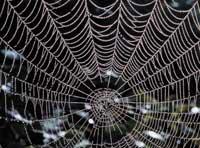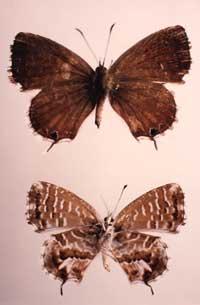Silk: softness and luxury
2003/05/11 Galarraga Aiestaran, Ana - Elhuyar Zientzia
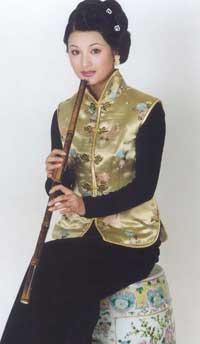
This paragraph appears in the play Kontrabaxua by Patrick Süskind. To express luxury and prosperity he has used the words ‘opera’, ‘perfume’, ‘scaffold’, ‘diamond’ and, of course, ‘silk’. And not in vain, silk has always been one of the most precious fabrics.
And the silk has a soft and sweet touch, is bright, can be toned with the most fascinating colors and represents oriental magic. In addition it is light, resistant and elastic, does not burn, resists rain and insects do not attack.
However, not everything can be in favor and has less satisfactory aspects: you have to clean it by hand and with cold water, it is not advisable to use bleach, it wrinkles easily and you have to iron with care. Despite the drawbacks, the fame of silk has lasted thousands of years and does not seem to invent in the short term a fabric that exceeds it.
Chinese by birth
The silk, of animal origin, produces silk worms ( Bombyx mori ) on its way to the butterfly. Apparently, a. C. C. For 2,700 years, in China they knew how to take advantage of worms' work, and for hundreds of years they kept this secret carefully. Silk fabrics were only used at the highest levels of society and considered the production of silk as sacred art.
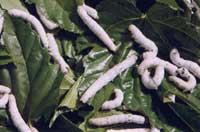
Over time this art spread to Japan, India and Persia, and to C. By the year 2000 it reached the west. In Europe, the industrialization of silk began in the fifth century and subsequently developed much in Italy, France and Spain.
From egg to cathode
The silk worm cycle lasts about 60 days and passes through different phases: egg, worm, chrysalis and butterfly. The man has managed to change the duration of the cycle, controlling the production. However, when the butterflies arrive, the male fertilizes the female and the female lays between 300 and 500 eggs. Then he dies and the male can survive a few more days.
The eggs are very small: in one gram between 1,000 and 1,500 eggs enter. At 25º C the worm is born at 15 days. Then they start eating. Its only food is the leaves of the spring, which every two days double its weight and size. In this way, at birth it passes from 2,1 mm to 8 cm in the 25th day and by then it has already eaten 20 leaves of mulberry like the one that weighs. Continue eating and eating until reaching 2,5 cm thick. Then it seems to satura and, raising the front of the body, begins to dance to one side and to another. This means that it will begin to be stored in the silk cocoon.
Palace of Silk
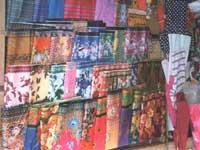
When the worm is ready to become a chrysalis, it begins to make a silk bud. To do this, it moves the head in the form of eight numbers, while two glands near the lower jaw secrete a liquid. In contact with the air, this liquid solidifies and transforms into silk thread. In turn, the worm secretes a rubber that binds the two filaments. For three days it transforms all its liquid into silk. In a hood 1,300 m of silk thread are collected and 5,500 worms are needed to produce 1 kg of silk.
Inside the silk cocoon, the worm becomes chrysalis. If the man allows it, 20 days the chrysalis could have a butterfly and go outside. To do this, you have to break the cocoon of silk. To avoid this, the silk buds pass through hot air tubes, with which the butterflies that are developing inside die.
The last steps of the process are in the hands of man. First we proceed to the collection and cooking of the silk buds, which facilitates the decomposition of the rubber and the release of the bud. The threads are extremely thin, so they cannot be used individually and the buds are released to four or twenty, depending on the thickness of the yarn fiber you want to get. Then the silk is worked twisting the threads. The different forms of twisting give a fabric of different appearance. Finally, the silk is spun and dyed. The result is a soft and shiny fabric.
Transgenic silk worms
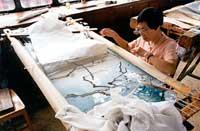
Considering that silk is made of proteins, some scientists have suggested that the silk worm can be used to produce other proteins of human interest. Therefore, the gene that encodes the silk protein has been identified and the possibility of including instead the gene that encodes another protein has been detected.
The first sessions have already been held in Japan. They have managed to form a silk worm that produces a protein in human skin, collagen. Collagen is used in medicine and production with silk yarn is much simpler and cheaper than the methods currently used. In the future, they believe they will produce other medically useful proteins, such as insulin.
Published in 7K.

Gai honi buruzko eduki gehiago
Elhuyarrek garatutako teknologia




